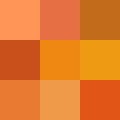
This is an index of color topic-related articles.
- Achromatic color
- Additive color
- Afterimage
- Analogous colors
- Bayer filter
- Blue–green distinction in language
- Chromaticity
- Chrominance
- Chromolithograph
- Chromophobia
- Chromotherapy
- Color (← Colour, Color (disambiguation))
- Color analysis
- Color balance
- Color blindness
- Color chart
- Color code
- Color constancy
- Color depth
- Colorfulness
- Color gradient
- Color in Chinese culture
- Color management
- Color mapping
- Color model
- Color mixing
- Color photography
- Color picker
- Color preferences
- Color printing
- Color psychology
- Color realism
- Color recovery
- Color rendering index
- Color scheme
- Color solid
- Color space
- ColorSync
- Color symbolism
- Color temperature
- Color term
- Color theory
- Color triangle
- Color vision
- Color wheel
- Colorimeter
- Colorimetry
- Color of chemicals
- Colour banding
- Colour cast
- Complementary color
- Cool colors
- False color
- Film colorization
- Four-color printing
- Horses
- Equine coat color (wikilinks to all other coat color articles)
- Color breed
- Grayscale
- Hue
- Human skin color
- Impossible color
- Kruithof curve
- Lightness
- Light-on-dark color scheme
- Liturgical colours
- Local color
- Lüscher color test
- Metamerism
- Monochromatic color
- Multi-primary color display
- National colours
- Palette (computing)
- Pastel (color)
- Political colour
- Primary color
- Rainbow
- Secondary color
- Saturation
- Spectral color
- Spot color
- Structural coloration
- Subtractive color
- Tertiary color
- Theory of Colours
- Thermochromics
- Tincture (heraldry)
- Tint, shade and tone
- Traditional colors of Japan
- Visual perception
- Visible spectrum
- Warm colors
- Watercolor
- Web colors
- X11 color names





